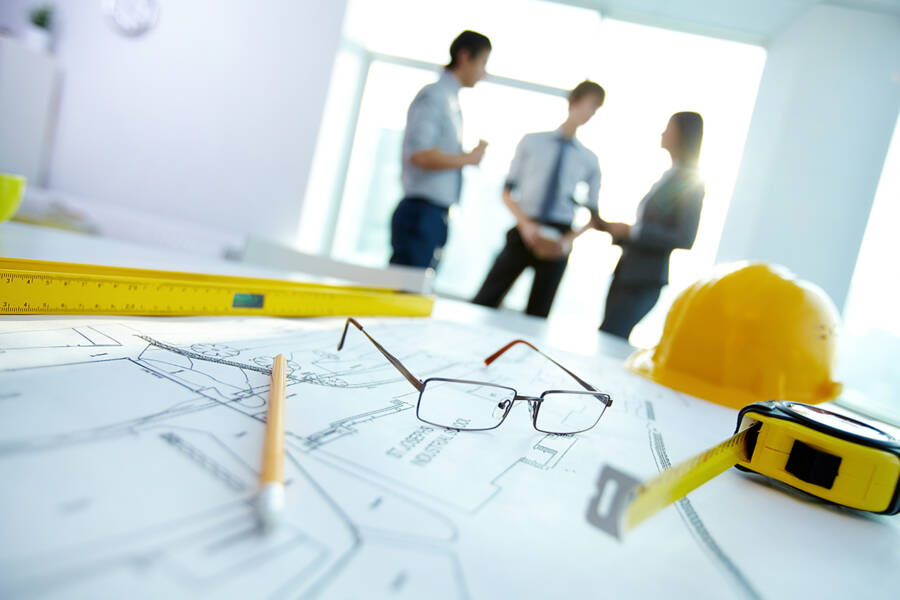What are BIM Dimensions?
Building Information Modeling (BIM) is a dynamic procedure that entails a series of phases and levels to create information-rich models for construction projects. It is an umbrella term that details well-structured digital information for the entire lifecycle of the construction — from planning, design, operation, construction, and delivery of a building project.
BIM models have a practical use for pre-determined and particular purposes, also known as use-cases. Depending on the project complexity and stage requirements, specific parameters are incorporated in BIM, which gives the model its dimensions.
Adding extra dimensions enhances the data associated with a model. BIM dimensions provide a more accurate analysis of your construction project, leading to a greater understanding of its delivery, timeline, and costs. It also helps to predict the sustainability of the buildings and infrastructure.
Benefits of BMI Dimensions
Now that we have tackled the BIM definition and meaning, it becomes clear how it revolutionized the architecture, engineering, and construction (AEC) industry. For instance, BIM helps engineers get a better insight into building and virtually assessing the project risks through an intelligent model-based process. For constructors, BIM helps to lessen the wastage of building materials. BIM for architects, on the other hand, ensures that inaccurate information exchanges are significantly reduced if not eradicated since manual reports are already out of the picture.
BIM software seamlessly gathers data such as reality capture. Afterward, the system stores it into a user-friendly location that provides real-time and centralized information for all people involved in the construction project. Thus, it enables efficient collaboration among multiple stakeholders, including AEC professionals, suppliers, and building owners.
BIM Dimensions in a nutshell
With the growing desire to revolutionize how establishments are created, building information has rapidly evolved from 2D computer-aided design (CAD) to 3D and 4D data in BIM models. Presently, sophisticated 5D, 6D, and 7D BIM technology further push the future of the AEC industry forward.
As mentioned, BIM dimensions – 3D, 4D, 5D, 6D & 7D – have pre-defined and specific purposes that vary according to the project development. The following sections detail what type of information is presented for each dimension and its advantages.
What is 3D BIM?
Graphical information. 3D BIM is the most familiar type of BIM model representing the three geographical dimensions (x, y, z) of a building structure. The geographical data extracted from this model helps stakeholders visualize the building’s anatomy before the project commencement. At this stage, stakeholders can examine and address structural issues before proceeding to the next ones.
Benefits of 3D BIM
✔️ Improved 3D visualization of the entire project
✔️ Shared realistic design expectations among stakeholder
✔️ Reduced possibilities of rework and revisions through effective communication among collaborators
What is 4D BIM?
Time and Programme Information. 4D BIM estimates the duration of a project. The addition of timeline and scheduling information helps to outline the project evolution overtime. This feature elaborates on the time it takes for making the project operational, component installation, and other scheduling data.
Benefits of 4D BIM
✔️ Early conflict detection through well-managed information on site status and visualized impact of changes undertaken during the entire life-cycle
✔️ Enhanced scheduling optimization and site planning
✔️ Improved efficiency and preparedness through shared timeline expectations
✔️ Increased safety with well-documented construction plans
What is 5D BIM?
Cost Information. 5D BIM is beneficial in scenarios where budget analysis and cost estimation are required at the early stages of a project. It can accurately calculate the project’s budgetary requirement over time, including the material, human resources, and equipment; Hence, giving project leaders and building owners a reasonable estimate of the costs of different construction designs and activities.
Benefits of 5D BIM
✔️ Real-time notifications and visualization of cost overrun
✔️ Automated count for system, equipment, or components associated with a project
✔️ Minimized unnecessary budget spending with regularly updated cost reporting and budgeting
What is 6D BIM?
Operational and maintenance information. 6D BIM (also known as integrated BIM) aids in a structure’s sustainability and energy efficiency. This process estimates the energy consumption that allows energy usage analysis during the initial design phase.
Unlike the conventional approach that focuses on the upfront costs, 6D BIM provides detailed building information that can improve a project’s facility management and operations. facilitate
This dimension essentially involves information about a component’s manufacturer, installation date, maintenance schedule, configuration details for best performance, energy requirement, and decommissioning information.
Benefits of 6D BIM
✔️ Comprehensive analysis of the economic and operational facets of the project lifecycle
✔️ Improved building operation and maintenance after project handover
✔️ Improved efficiency and preparedness through shared timeline expectations
✔️ Reduced energy consumption of the building structure
What is 7D BIM?
Facilities management information. 7D BIM improves facility management and operation by allowing stakeholders to keep track of essential asset data such as building status, technical specifications, warranty information, and operations manual. This feature is beneficial to contractors and subcontractors since all replacement parts and specifications are listed on a database.7D BIM information ensures that the project comes in a full circle from conceptualization to demolition (or possibly a project’s recycling).
Benefits of 7D BIM
✔️ Optimized facilities management from conceptualization to the demolition stage
✔️ Efficient process of parts repair or replacement
✔️ Facilitates the maintenance process for contractors and subcontractors
BIM streamlined the entire lifecycle of construction projects and made it easier for AEC professionals and other stakeholders to communicate, regardless if they are on-site or working in other parts of the globe. With this innovation, endless possibilities for building design and construction for the AEC industry.

Ingrid Maldine is a business writer, editor and management consultant with extensive experience writing and consulting for both start-ups and long established companies. She has ten years management and leadership experience gained at BSkyB in London and Viva Travel Guides in Quito, Ecuador, giving her a depth of insight into innovation in international business. With an MBA from the University of Hull and many years of experience running her own business consultancy, Ingrid’s background allows her to connect with a diverse range of clients, including cutting edge technology and web-based start-ups but also multinationals in need of assistance. Ingrid has played a defining role in shaping organizational strategy for a wide range of different organizations, including for-profit, NGOs and charities. Ingrid has also served on the Board of Directors for the South American Explorers Club in Quito, Ecuador.









































